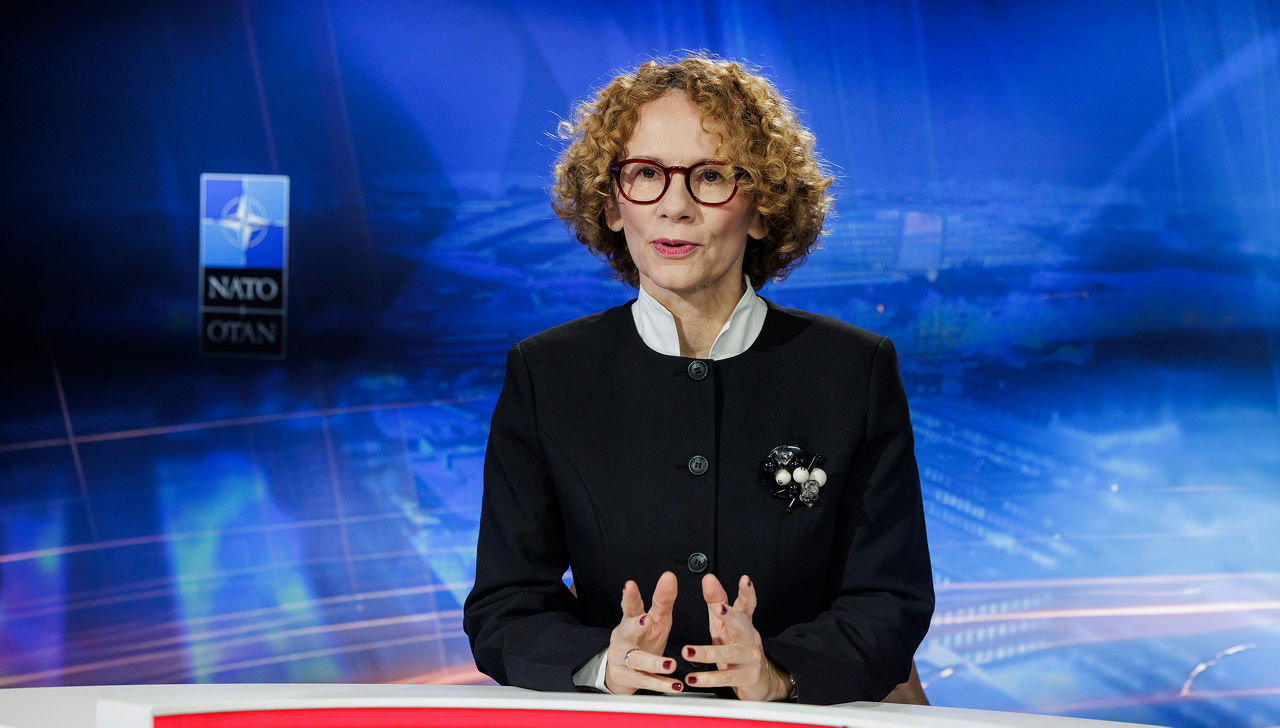Download NATO’s broadcast-quality video content free of charge

Log in
NATO MULTIMEDIA ACCOUNT
Access NATO’s broadcast-quality video content free of charge

Check your inbox and enter verification code
You have successfully created your account
From now on you can download videos from our website
Subscribe to our newsletter
If you would also like to subscribe to the newsletter and receive our latest updates, click on the button below.
Enter the email address you registered with and we will send you a code to reset your password.
Didn't receive a code? Send new Code
The password must be at least 12 characters long, no spaces, include upper/lowercase letters, numbers and symbols.
Your password has been updated
Click the button to return to the page you were on and log in with your new password.
(As delivered)
Thank you so much. And good morning
And good morning Minister Bohlin, and all of you in Stockholm!
I regret that I cannot be with you in person today, but I’m really glad to have this opportunity to join you from NATO Headquarters in Brussels.
Let me start by thanking Sweden for organising and hosting this Civilian Planning Conference,
and, more broadly, for its valuable contributions to our Alliance – not least in the High North and in the Baltic Region.
Let me also thank you for your continued support to Ukraine, which the Minister has additionally highlighted.
The Conference that takes place today in Stockholm really demonstrates the growing importance of boosting awareness, preparedness and resilience across all of our societies.
And I really cannot think of a better place to have a discussion on civilian planning than in Stockholm.
Because Sweden is really leading the way when it comes to resilience and civil preparedness.
We all have much to learn from you,
and we can really find inspiration in your ‘Total Defence’ model –
combining military defence and civilian defence to truly make resilience a whole-of-government and a whole-of-society effort.
That’s the way to go to bolster resilience across the board.
This is also why it is extremely important to have your Minister also here in the Headquarters talking to Allies on these issues.
We need to be clear-eyed about the threats we face,
and ready to deal with them.
The threats are significant and they’re lasting.
Russia’s revanchist and expansionist ambitions will not end when its war against Ukraine does.
We are all working to end this war as quickly as possible – and to secure a just and lasting peace.
But we should not be naïve.
Russia’s pattern of aggressive behaviour is not going to shift or reverse any time soon.
And Russia is not acting alone.
It is partnering with China, Iran, North Korea and others to undermine freedom, democracy, and the entire global order.
The threats we face are also close-by…and coming even closer.
They push on our borders.
They penetrate our societies.
They undermine our vital services and infrastructure.
Think of terrorist attacks,
critical infrastructure sabotage,
and cyberattacks.
This summer, the United Kingdom exposed the use of sophisticated spying software by Russian military intelligence.
And this is just one of those examples.
These hostile actions against us are skyrocketing.
Therefore, against this background, NATO leaders met in The Hague, just over four months ago,
and made significant decisions to further strengthen our deterrence and defence.
In particular, we agreed to invest 5% of GDP in defence by 2035.
Of the 5%, at least 3.5% of GDP will be invested in core defence requirements –
to directly fund our militaries and the equipment they need.
It is clear that to stay safe in this more dangerous world,
we are going to need better and more military capabilities…
and we need them fast.
There’s a lot of focus on accelerating the production of defence capabilities.
But at the same time, we are going to need stronger societies, stronger infrastructure.
And this is why another 1.5% of GDP annually will go towards investments related to our security and defence.
This includes investments to protect critical infrastructure and networks,
reduce any harmful dependencies that our opponents and competitors could exploit,
and ensure greater resilience, also to support our military.
This is crucial.
Resilience is like a muscle.
It needs to be trained to be kept strong.
And that’s a job for each individual Ally to take on.
But NATO plays a part too.
Resilience is embedded in Article 3 of NATO’s founding treaty, just as Minister Bohlin mentioned.
Back in 1949, it was about being resilient to armed attacks specifically.
But our current security environment requires us to also build up resilience to a range of hostile actions.
So our work has evolved.
This past decade, we have agreed resilience baseline requirements.
And we’ve established collective resilience objectives and national goals –
to help ensure each and every Ally is best prepared…at all levels.
Last year, at the NATO Summit in Washington, Allies decided to integrate civilian planning into national and collective defence planning –
because resilience needs to be a whole-of-government and whole-of-society responsibility.
As we take our work on resilience and civil preparedness forward, we continue to build our community.
That’s what this Conference is also about:
Bringing the right people, countries, and institutions together to best prepare our societies for the unexpected.
Our security depends on remaining resilient and united.
And we all have an important part to play.
Thank you very much for playing this part, for preparing us for all this, and keep up the great work. Thank you.

